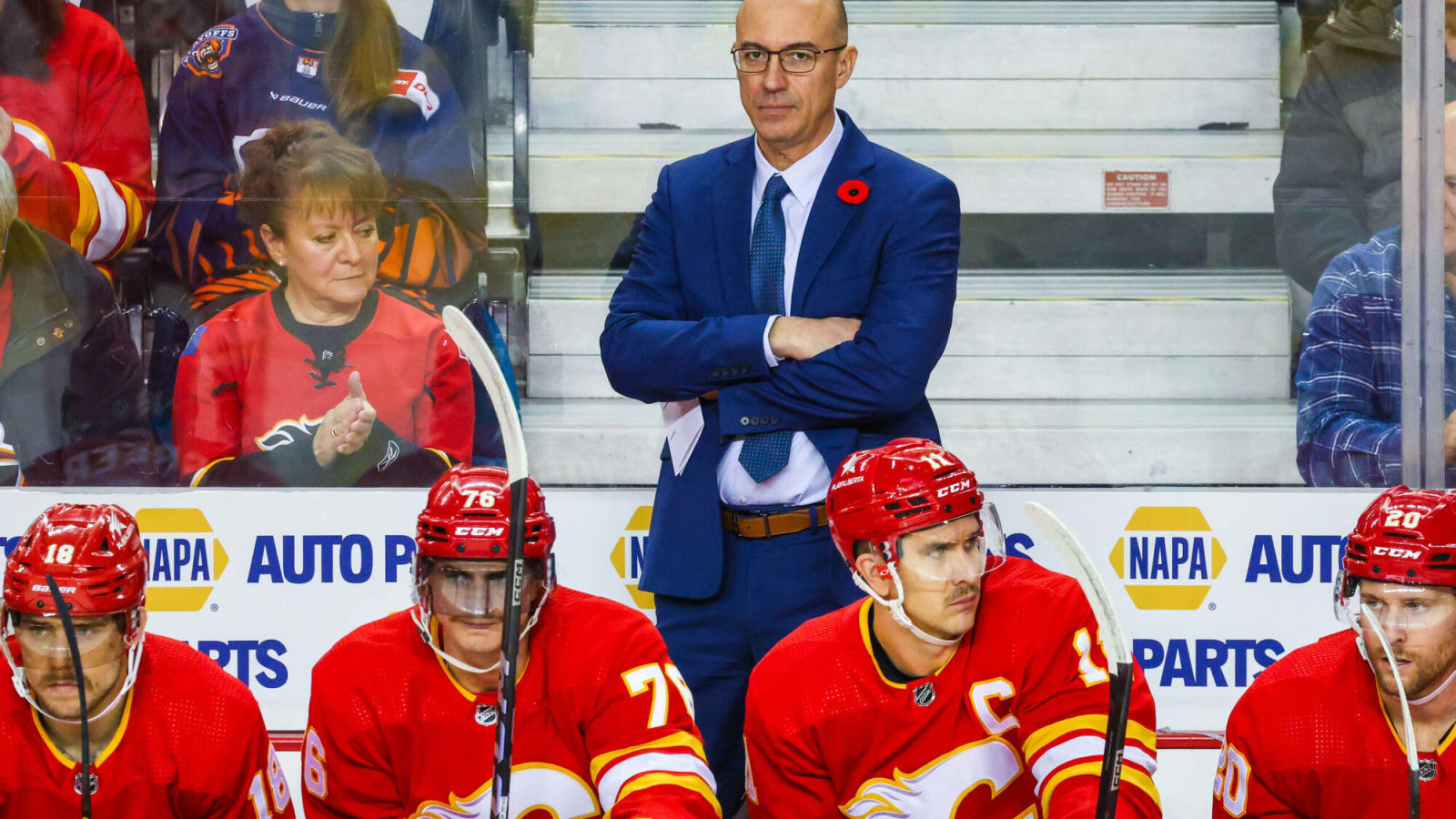
The Calgary Flames went through yet another coaching change in the off-season when they fired Darryl Sutter and hired Ryan Huska as the Flames’ 10th head coach since 2003.
One of the big changes Huska has made is in the defensive zone where the Flames have transitioned from a man-on-man defensive system to a zone defensive system.
Here is a very high level breakdown of each system.
Man-on-man system
In a man-on-man system, each player has one opposing player to cover while the puck is in their own end. Typically, the two defencemen take the first two forechecks. The centre takes the third forechecker. And the two wingers take the opposing defencemen.
A man-on-man system relies on constant puck pressure and taking away time and space from the opponent. One of the benefits to playing a man-on-man is that there is little confusion about who is supposed to cover who. You won’t see as many communication break downs in your own end.
However, man-on-man does have some drawbacks. Firstly, it’s incredibly taxing on players as the season goes along because you’re constantly skating and moving your feet to stay with your check in your own zone. Last season the Flames skated the most distance of any team in the NHL. A big reason for that was from the strict man-on-man system Sutter implemented. You have to have a great skating team to effectively pull this off.
Elite players and teams can also find ways to create high danger chances by exposing lower quality players. In a man-on-man system, the defenders have to be able to skate and keep up with their opposition. That’s not easy to do against the likes of Connor McDavid, Nathan MacKinnon, and Elias Pettersson.
Zone system
The Flames have transitioned into playing a zone defence this season under Huska. The rationale behind it was to prevent high-quality chances, even if it means spending more time in your end.
In a zone defence, each defender is responsible for an area of the ice as seen in this diagram.
(Diagram courtesy of LeagueAthletics.com)
The defensive zone is split into four quadrants. The wingers and defencemen each look after one quadrant. And the centre supports the defencemen in the slot, in front of the net, behind the net, and in the corners. They will pick up open players in those zones who aren’t covered by a defenceman.
The point of playing a zone defence is to limit scoring chances in the slot. In a zone you can do a better job of keeping the opposition to the outside and having defenders between the offensive players and the net.
This system requires a lot of communication between the defending players, particularly the centre and the two defencemen. The centre and the two defencemen are responsible for covering the slot, the most important part of the ice.
One of the negatives that come from playing a zone defence is if you have a lapse in communication, you will leave opposing players open in the slot. And because you’re not as aggressive when checking the opposition, opposing teams are able to spend more time in the offensive zone which can lead to breakdowns by the defending team.
How has the transition worked for the Flames?
It’s early in the 2023-24 season, but let’s compare the numbers from last season to this season to see if the change in system has helped the Flames.
The numbers show that the Flames were one of the best defensive teams in the NHL last season but got horrific goaltending. One of the narratives to come out of last season is that the Flames didn’t give up a lot of scoring chances, but when they did, they were five alarm fires. I don’t buy that one bit. Every team in the NHL gives up their fair share of quality chances against. It’s the NHL. The best players in world can make any team look silly on any night. The Flames gave up the fourth fewest high danger chances at 5-on-5.
It’s pretty surprising that they decided to make such a drastic move to how they play.
The numbers have not been as good as last season, but the Flames have been good defensively according to the numbers. The only stat that’s not in the top half of the NHL is high danger chances against which is 17th, one off being in the top half.
Another thing to keep in mind is that the Flames have only played this zone system for one month. There is still time for them to improve upon the results.
The big difference I am seeing is the Flames are giving up more high danger chances this season, in big part due to communication breakdowns between the defencemen and centre. And that’s on the new system. Huska and the coaching staff is going to have to clean up that part of the game if the Flames are going to turn things around and get back into the playoff picture.
More must-reads:
- Rangers special teams, goaltending help them take control against Hurricanes
- Three reasons Oilers will eliminate Canucks in the second round
- The 'Leading scorers from the 1992-93 NBA season' quiz
Breaking News
Customize Your Newsletter
 +
+
Get the latest news and rumors, customized to your favorite sports and teams. Emailed daily. Always free!

